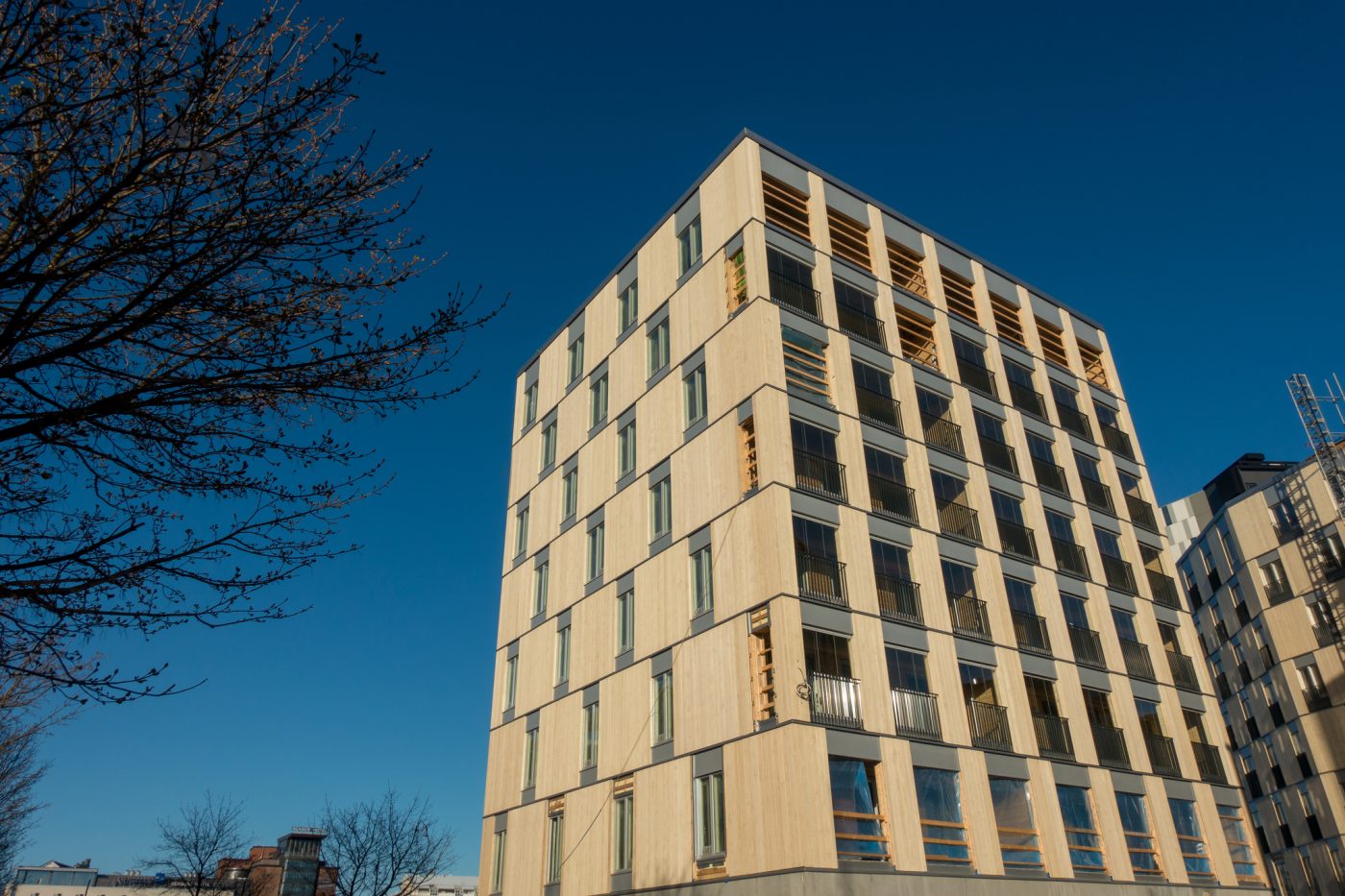Wood – a material that can transform the construction sector?
Blog - Published 14.12.2018

 Despite improvement in the construction sector, the sector is a big contributor to climate change and a sector with massive natural resource extraction. It has been estimated that just the production of cement (key ingredient in concrete) is responsible for up to 8% of the global C02 emissions. Construction and demolition waste (CDW) accounts for approximately 25% – 30% of all waste generated in the EU. Clearly there is a need for a sustainable transition in the construction sector and here the bioeconomy has a lot to offer.
Despite improvement in the construction sector, the sector is a big contributor to climate change and a sector with massive natural resource extraction. It has been estimated that just the production of cement (key ingredient in concrete) is responsible for up to 8% of the global C02 emissions. Construction and demolition waste (CDW) accounts for approximately 25% – 30% of all waste generated in the EU. Clearly there is a need for a sustainable transition in the construction sector and here the bioeconomy has a lot to offer.
Recently the concept of using wood in industrial construction of primarily housing has attracted a lot of attention. But, how does the outlook of scaling up the use of wood in construction look like? We have been examined this question in the Nordic ‘Wood in Construction’ project by asking key stakeholders about the barriers and opportunities for increasing the usage of wood in construction.
Some of the key findings from these initial workshops are that we simply lack the knowledge and experience in using wood for construction on an industrial scale. Increased focus on university and professional teaching within wood construction will be required to educate the future constructors. Another barrier is that changing direction of a whole sector such as the construction sectors takes time and needs coordinated efforts in the full value chain. Well-developed processes and procedures that have been in place and refined for decades will take time to replace. Initiatives for accelerating this transformation will have to make use of pilot examples illustrating the various benefits of using wood – such benefits are e.g. C02 emission reduction potential (to be well documented through life-cycle-assessment), higher precision in the construction of building elements, higher well-being with wood construction (as examined in the KäPy project) and faster construction at the actual sites with less noise and disturbance in the increasingly denser city.
At the other end of the value chain – in the forest, the increased demand for wood for construction provides opportunities for increasing value and job creation and strengthening sustainability in forestry and focusing on modern bioeconomy. The questions raised here are how the forest sector can prepare to address the increased demand and what planning is needed to promote an optimal and sustainable forestry sector. The increased demand could allow for increased value creation, but at the same time it could possibly compete with other use of wood material.
A conclusion so far from the Wood in Construction, is that it will take a focus on the whole value chain for increasing the use of wood in construction. There will be a need for innovative front runners and a focus on the broad perspective of benefits and opportunities which wood in construction brings. The Nordic countries has a lot to offer in this transition, which will benefit both the global reduction in emissions and the economic development for small and big companies along the value chain of this field. But it will require co-operation between various stakeholders – for some it will be a challenge to be open for this co-operation, but it will be essential for the sustainable transition.
The author Anders Vestergaard Jensen is the project manager for the Nordic Wood in Construction, he has been working with global challenges and the opportunities for business to contribute to the UN Sustainable Development Goals through innovation and co-creation of new solutions. He has a PhD background within the field of decision support systems.
Contacts: Anders.Vestergaard-Jensen(a)climate-kic.org, Twitter @AndersVJensen
Shortly about Wood in Construction project: The Swedish Government and the Nordic Council of Ministers have in 2018 initiated Nordic project concerning the use of wood in construction. The 3-year project is led by a secretariat hosted by Climate-KIC Nordic and has the aim of supporting further development of the use of wood in construction.
***
In this #BioChallenge blog series decision makers and leading experts from different parts of Europe raise important development issues which can be answered with bioeconomy-based solutions.
Published on Dec 12, 2018.
